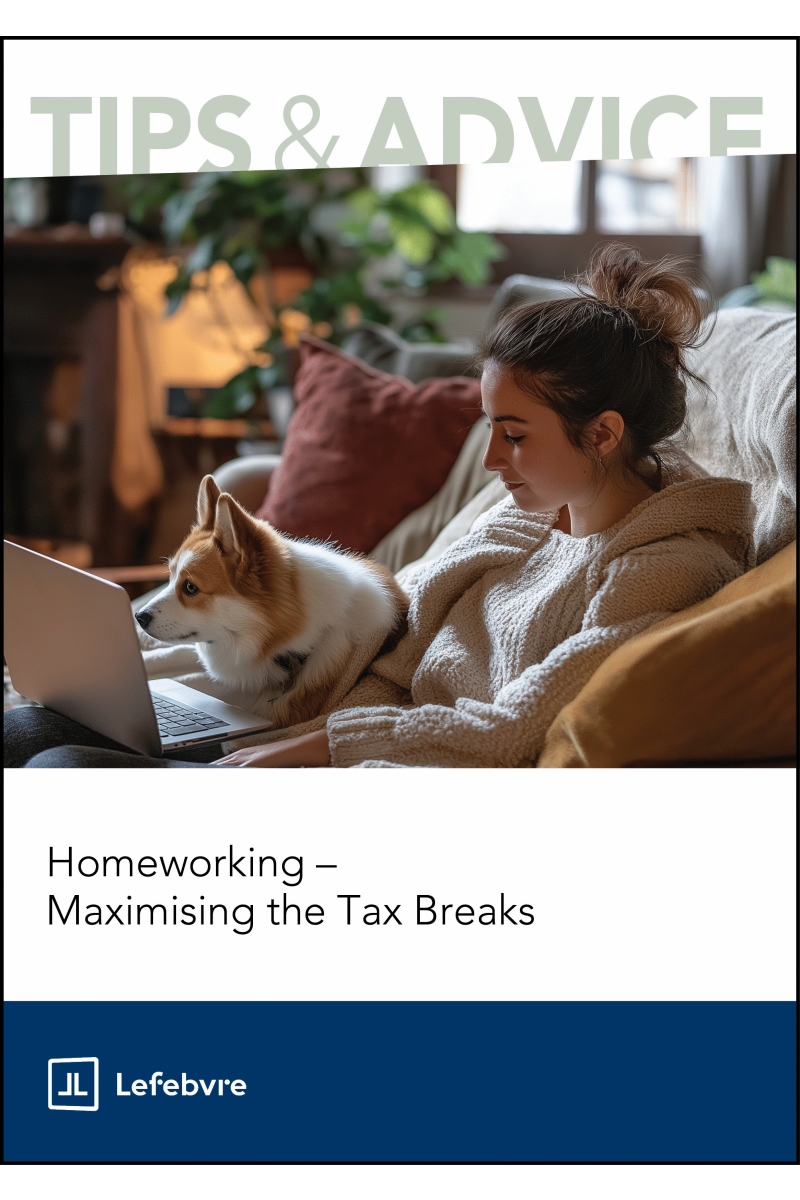Homeworking - Maximising the Tax Breaks

Working from home offers incredible flexibility, but are you making the most of the tax benefits available to you? Our exclusive Tips & Advice Special Report “Homeworking – Maximising the Tax Breaks” is designed to help business owners, employers and employees structure their homeworking arrangements in the most tax-efficient way possible.
Inside, you'll gain expert insights into how homeworking affects income tax, National Insurance, capital gains tax and VAT, empowering you to minimise liabilities and maximise savings. This guide breaks down everything you need to know, from special homeworking allowances and flat-rate deductions for sole traders and business partners, to reclaiming VAT on homeworking expenses and understanding the impact of capital gains tax when working from home.
Don't miss out on valuable opportunities to reduce costs and stay compliant. Download your Special Report today and start saving !
| Type of product | |
|---|---|
| Version of support of product | PDF format |
| Identifier (EAN / ISSN / Action Code) | 9781911744344 |
| Availability | In stock |
| Access to exercice | No |
| Publisher | Lefebvre UK |
| Language of the product | EN |
| Publication Date | Apr 11, 2025 |
| Access to Strada Be | No |
| Access to Strada EU | No |
| Access to Strada LU | No |
In this Tips & Advice Special Report you'll read about...
1. Running your business from home
1.1. What are the basic principles?
1.2. What‘s the basis of apportionment?
1.3. What costs can be claimed?
1.4. How does HMRC apply the homeworking rules?
1.5. What are the practical considerations?
1.6. What’s the VAT position?
2. Simplified deductions for the self-employed
2.1. Introduction
2.2. What are the flat-rate deductions?
2.3. How does the flat rate compare with the standard calculation?
2.4. What costs is the flat rate meant to cover?
3. Living at your business premises
3.1. Why is an adjustment to property costs required?
3.2. What are the flat-rate adjustments?
4. Employees and directors using their homes for work
4.1. Introduction
4.2. How does the wholly, exclusively and necessarily rule work?
4.3. How does the tax-free allowance household expenses work?
4.4. What is the tax and NI exemption for “accommodation expenses”?
4.5. Does the accommodation expenses rule apply to equipment?
4.6. What if business and private use varies?
4.7. What changes were made to CAs because of coronavirus?
5. Alternative tax relief for homeworking costs
5.1. Introduction
5.2. Is there a more tax-efficient alternative to claiming expenses?
5.3. What other points about the arrangement need to be considered?
6. Other homeworking tax issues
6.1. Introduction
6.2. What is CGT private residence relief?
6.3. Does business use of your home affect private residence relief (PRR)?
6.4. What’s the government’s policy on business rates and homeworking?
6.5. What are the business rates implications?
6.6. What is the CGT private residence relief and business rates interaction?
6.7. What are the record keeping requirements?
7. Creating a home office
7.1. Introduction
7.2. Unincorporated businesses
7.3. Companies
7.4. Companies - structural improvements to a director’s home
7.5. Companies and unincorporated businesses from 29 October 2018
8. Employer-provided living accommodation
8.1. Introduction
8.2. What is the amount of accommodation benefit?
8.3. What if there are separate business and living areas?
8.4. Temporary accommodation
9. Travel expenses
9.1. Introduction
9.2. When can travel expenses be claimed?
9.3. What about self-employed travel to a place of work?
9.4. How much can be claimed for motoring costs?
10. Appendices
10.1. Appendix 1 - HMRC’s use of home as office example calculations - for the self-employed (BIM47825)
10.2. Appendix 2 - Valuation Office Agency factsheet - council tax and business rates - working at or from home
10.3. Appendix 3 - Structures and buildings allowance
11. Documents